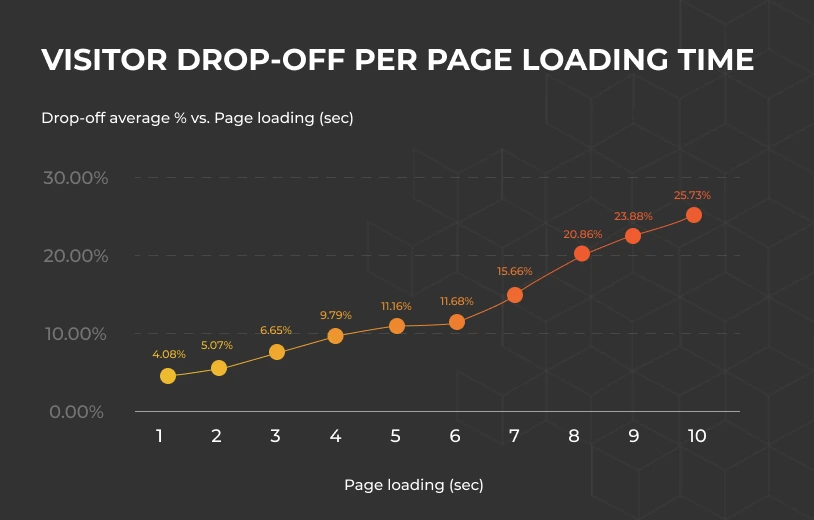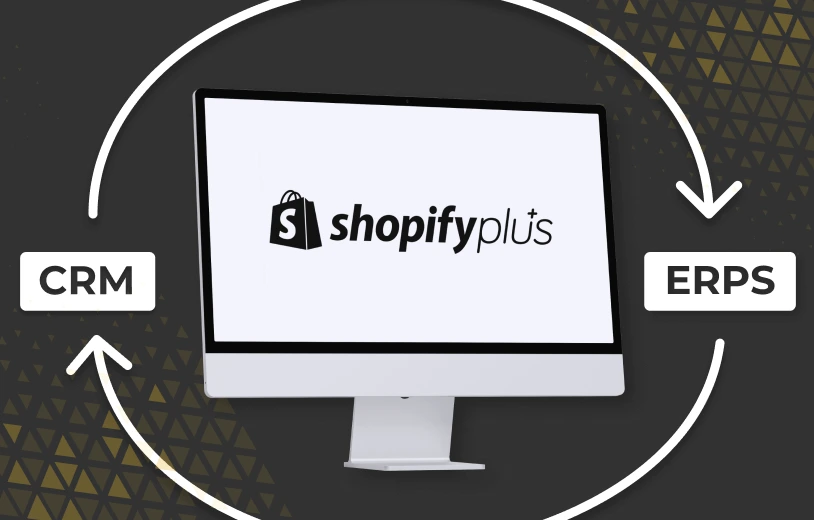Key Takeaways
- Shopify is user-friendly, but expert developers unlock its full potential with advanced features, deep platform knowledge, and scalable customizations.
- A cookie-cutter template won’t cut it. Developers create unique storefronts that align with your brand and audience, helping you stand out in a crowded market.
- Skilled Shopify developers ensure seamless integration with essential business systems like CRMs, ERPs, and inventory management tools, eliminating friction and boosting efficiency.
- Developers improve site speed, mobile responsiveness, and SEO, driving better user experience and more organic traffic—crucial for eCommerce success.
- The eCommerce landscape changes constantly. With proactive updates and troubleshooting from professionals, your store stays secure and competitive.
- Hiring pros may cost more upfront but avoids expensive mistakes, shortens timelines, and boosts conversions—leading to better return on investment.
Is your eCommerce enterprise platform keeping up with your business growth, or is it secretly holding you back? Many businesses don’t realize their platform’s limitations until they face significant challenges or missed opportunities.
If you have frequent downtime, integration issues, or poor performance metrics, these may be signs of platform limits. They are not just temporary technical problems.
In fact, businesses using outdated or ill-fitting platforms typically lose 15-30% of potential revenue due to these limitations.
We look at the critical warning signs that indicate your current platform might be restricting your growth—performance issues, integration challenges, data analytics limitations, and security concerns.
1. The Hidden Cost of Platform Limitations

Platform limitations erode business value across multiple dimensions. Recent analysis shows retailers with the highest sales growth experienced the largest margin decline, highlighting how unprofitable digital growth destroys value.
Impact on Revenue Growth
Outdated eCommerce platforms directly impact financial performance. Businesses lose approximately 10% in revenue, specifically from downtime and performance issues. Moreover, maintaining older systems requires more manual work and custom coding, subsequently increasing operational costs.
A Shopify Plus design agency can help businesses mitigate these losses by optimizing performance, reducing downtime, and streamlining operations with a more scalable platform.
Missed Market Opportunities
Technical debt severely restricts business agility. Specifically, 72% of eCommerce leaders express frustration with their platform’s slow implementation of new functionality. In addition, 90% of businesses struggle to deploy new technologies across different geographical locations, limiting expansion potential.
With the help of a Shopify Plus web design agency, businesses can break free from these constraints and leverage powerful tools to stay ahead of the competition.
Customer Experience Degradation

Poor platform performance fundamentally erodes customer satisfaction. Research indicates that 40% of users will abandon a website if it takes longer than three seconds to load.
Furthermore, customer experience quality has reached its lowest point in history, with an unprecedented 39% of brands experiencing significant declines.
Consider these critical platform limitations:
- 77% of businesses feel urgent pressure to migrate platforms specifically due to scalability issues.
- 40% of users state they would likely stop working with companies whose applications perform poorly.
- 76% of products miss potential sales by failing to include searchable attributes that customers actively seek.
The impact extends beyond immediate sales losses. Maintaining outdated systems creates a perpetual cycle of dependency, forcing businesses to pay excessive fees even when the platform no longer meets their needs.
This technical debt impacts the ability to innovate and respond to market demands, compounding business growth.
2. Performance Red Flags
Performance metrics reveal critical warning signs about enterprise eCommerce platform capabilities. A thorough analysis shows that about 70% of consumers base their purchasing decisions on page speed.
Site Speed and Load Time Issues
Page load speed directly affects conversion rates.
Studies indicate bounce rates increase by 32% when pages take 1-3 seconds to load and soar to 90% at 5 seconds. Primarily, server response time should remain under 200 milliseconds to maintain optimal performance.
Yet, many platforms struggle with basic speed optimization, leading to significant revenue loss.
Slow-loading websites don’t just frustrate users—they cost businesses real money. Google reports that a one-second delay in page load time can reduce conversions by up to 20%. Slow websites suffer in search engine rankings, making it harder to attract new customers organically.
SEO algorithms prioritize speed and performance, meaning a lagging site could be buried under faster competitors in search results.
Mobile Experience Problems
Mobile shopping presents unique challenges for enterprise platforms. Research shows that users face interruptions every 20 minutes on average, with some experiencing disruptions as frequently as every 4.5 minutes.
Mobile users have even less patience for slow websites, with 53% abandoning a page if it takes longer than three seconds to load.
A sluggish mobile experience doesn’t just hurt sales—it damages brand reputation and reduces customer trust.
System Downtime Frequency
System availability remains a critical concern, with 80% of data centers experiencing downtime between 2020 and 2022. The financial impact proves substantial – enterprises with revenues exceeding £10 million lost over 10% of their earnings to downtime.
Meanwhile, according to Gartner, downtime costs average $5,600 per minute, potentially reaching $83,000 per minute during peak periods.
Downtime not only disrupts operations but also erodes customer confidence. Customers who experience an inaccessible website are unlikely to return. Additionally, frequent downtime signals to search engines that a website is unreliable, negatively impacting SEO rankings.
Key performance indicators that signal platform limitations:
- High CPU usage indicates system strain
- Server response delays exceeding 200 milliseconds
- Mobile load times are 87.84% longer than desktop versions
- Frequent maintenance requirements consuming developer resources
Businesses must closely monitor these metrics. Regular performance testing, including load testing and vulnerability scanning, helps identify potential issues before they impact operations.
Meanwhile, implementing browser prefetching and optimizing backend code can significantly improve response times.
3. Integration and Scalability Challenges
Successful enterprise eCommerce platforms require seamless integration capabilities and robust scalability features to support business growth.
Recent studies show that 55% of businesses find cross-border eCommerce operationally challenging.
Third-party Integration Difficulties
Integration complexities pose significant operational challenges.
Businesses face mounting costs as integration expenses multiply rapidly across users and systems. Fundamentally, compatibility issues arise when:
- Systems store data in incompatible formats
- Legacy systems use outdated technology
- Closed architectures prevent third-party access
- Documentation remains limited or outdated
Notably, 41% of businesses struggle with accurate product classification, while security risks increase substantially when integrations aren’t correctly implemented.
Multi-channel Commerce Limitations
Multi-channel commerce presents unique scaling challenges.
Essentially, less than 10% of companies consistently engage with consumers across multiple channels, despite cross-channel shoppers showing 30% higher lifetime value than single-channel buyers.
The complexity intensifies as businesses expand their reach. Research indicates that retailers selling on just two online marketplaces experience a 190% increase in revenue compared to single-channel sellers.
Consequently, 75% of companies report increased sales from multi-channel systems, while 64% note improved customer loyalty
Global Expansion Roadblocks
Global expansion introduces additional integration hurdles. Primarily, businesses must navigate complex regulatory landscapes and manage diverse payment systems across borders. The average payment failure rate is 11%, costing U.S. merchants $3.80 billion in lost sales annually.
Cross-border challenges include:
- Managing inventory across multiple regions
- Handling different versions of warehouse management software
- Coordinating various shipping carriers and times
- Adapting to local payment preferences
The global eCommerce market is projected to reach $5.89 trillion by 2029. This highlights the immense growth potential for businesses that can overcome these challenges.
Companies that successfully expand internationally are those that invest in scalable infrastructure, seamless integrations, and localized shopping experiences.
Cloud-based solutions and regular performance testing help identify potential bottlenecks before they impact customer experience.
4. Data Analytics and Insights Gaps
Data analytics capabilities are the backbone of modern eCommerce operations, yet many enterprise platforms fail to deliver actionable insights.
A study reveals that only 20% of retailers effectively use data analytics to its full potential.
Limited Customer Behavior Analysis
Understanding customer behavior presents significant challenges for businesses using outdated analytics tools. Primarily, companies struggle with data overload, as vast amounts of information flow from multiple channels.
Customer behavior analysis should extend beyond basic demographics and web traffic, as 76% of shoppers consider product images crucial for purchasing decisions.
Businesses face mounting pressure to analyze customer interactions effectively. Studies show that 72% of customers examine ratings and reviews before purchasing, while 40% rely on user-generated content.
However, many platforms lack the sophisticated tools to process these diverse data sources.
Incomplete Performance Metrics
Data quality is a critical concern, with 30% of organizations reporting poor data quality. The challenges multiply when platforms struggle with:
- Data silos across different departments
- Incompatible data formats
- Limited integration capabilities
- Fragmented customer insights
Currently, 45% of shoppers abandon purchases because of inadequate product images, while 42% leave due to incomplete product information. These metrics highlight the direct connection between data quality and revenue generation.
Real-time Reporting Constraints
The velocity of data poses substantial challenges for enterprise platforms. Businesses frequently miss opportunities because their systems cannot process information quickly enough.
Similarly, 60% of retailers plan to increase their investment in data analytics, recognizing the need for better real-time capabilities.
Technical limitations often result in:
- Delayed decision-making processes
- Missed market opportunities
- Ineffective campaign optimization
- Customer experience degradation
The impact extends beyond immediate sales, as the global market for retail analytics is projected to reach USD 23.53 billion by 2030.
Ultimately, businesses using data-driven decision-making are 23 times more likely to acquire customers and six times more likely to retain them.
5. Security and Compliance Concerns
Security vulnerabilities in enterprise eCommerce platforms pose substantial risks to business operations and customer trust. A concerning 92.4% of analyzed eCommerce sites exhibit malicious or suspicious security issues.
Outdated Security Protocols
Fundamentally, outdated security protocols create significant vulnerabilities in eCommerce systems. Primarily, these weaknesses expose businesses to various cyber threats, as 32.4% of all attacks target the eCommerce sector. Indeed, 50% of small eCommerce retailers fall victim to credit card fraud annually.
The impact proves particularly severe for smaller operations, as 60% of affected stores cease operations within six months of a security breach.
The financial implications extend beyond immediate losses – the average data breach costs businesses USD 4.35 million and needs up to 280 days to contain.
Regulatory Compliance Issues
The regulatory landscape for eCommerce platforms continues to evolve, with 75% of global consumers now covered by modern privacy laws. Undoubtedly, compliance requirements vary across regions:
- GDPR violations can result in fines of up to €20 million or 4% of global revenue
- CCPA applies to businesses with ≥100,000 customers or USD 25 million annual revenue
- PCI-DSS violations can incur penalties ranging from USD 10 to USD 10,000 monthly
Maintaining compliance proves challenging as 97% of consumers express concerns about data misuse. Overall, 84% of consumers demonstrate greater loyalty to businesses with robust security controls.
Data Protection Limitations
Data protection capabilities often fall short of modern requirements.
Regardless of size, businesses must safeguard sensitive information across multiple touchpoints. A study reveals that 29% of traffic accessing eCommerce websites consists of malicious requests.
The consequences of inadequate protection extend beyond financial losses. 81% of consumers say they would cease doing business with an online company after a data breach. This highlights the critical connection between data security and customer retention.
To mitigate these risks, enterprises must implement comprehensive security measures:
- Regular security audits and vulnerability assessments
- Multi-factor authentication systems
- Encrypted payment gateways
- Secure data storage protocols
The retail sector experiences 16.7% of all breach incidents, underscoring the importance of robust security measures. Furthermore, businesses operating across borders face additional challenges, as they must comply with varying regional requirements while maintaining consistent security standards.
Why Work with a Shopify Plus Web Design Agency?

A Shopify Plus design agency specializes in redesigning enterprise-level Shopify stores to enhance speed, performance, and user experience. By working with experts, businesses can:
- Improve site speed and responsiveness
- Ensure seamless integration with third-party tools
- Optimize product pages for higher conversions
- Enhance security and compliance standards
Whether your business faces performance issues, integration challenges, or poor scalability, a Shopify Plus web design agency can help you transition smoothly to a more efficient and future-proofed platform.
Conclusion
Upgrading your eCommerce platform isn’t just about aesthetics—it’s about creating a seamless, high-converting shopping experience that drives revenue.
Let’s build a Shopify Plus store that’s built to scale.
Contact our eCommerce experts for an audit of your current store to identify key performance gaps and work out a plan to take your eCommerce business to the next level.
